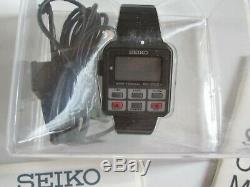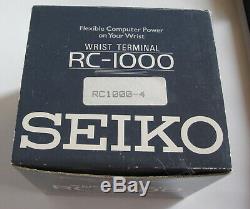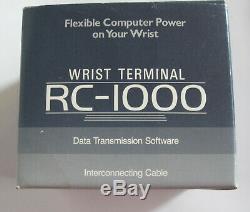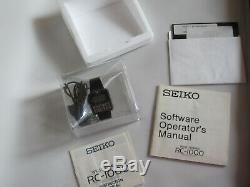
- Homepage
- Brand
- Features
- 12-hour Dial (11)
- 1st Edition (10)
- Advertising Specimen (6)
- Battery Powered (51)
- Boxed (376)
- Brick Separator (15)
- Custom Figure (7)
- Date Indicator (8)
- Gold Trim (15)
- Hand Painted (9)
- Kit (13)
- Light Function (7)
- Lot (16)
- New (18)
- Retired (25)
- Talking (15)
- Transforming (18)
- Unopened Box (19)
- Vintage (461)
- With Clothes (31)
- ... (3146)
- Material
- Brass (11)
- Die-cast Plastic (23)
- Die-cast, Plastic (5)
- Diecast (10)
- Diecast / Plastic (5)
- Enamel (8)
- Glass (7)
- Hard Plastic (23)
- Metal (11)
- Metal & Plastic (8)
- Metal, Plastic (7)
- Plastic (2178)
- Plastic / Vinyl (15)
- Plastic, Metal (6)
- Porcelain (25)
- Stone (8)
- Thuya Wood (5)
- Tin (5)
- Vinyl / Plastic (6)
- Wood (89)
- ... (1822)
- Pattern
- Shape
- Type
- Accessories (12)
- Action Figure (641)
- Box (176)
- Boxes (15)
- Buggy (20)
- Complete Set (55)
- Doll (125)
- Doll Playset (12)
- Fashion Doll (55)
- Figure (17)
- Fountain Pen (9)
- Jewelry Box (62)
- Playset (133)
- Starships & Shuttles (34)
- Starter Set (10)
- Storage Box (24)
- Tackle Box (17)
- Trinket Box (42)
- Vehicle (288)
- Wristwatch (45)
- ... (2485)
Seiko Wrist Terminal RC-1000 with box, manual, cable, UNOPENED Watch







Seiko RC-1000 wrist terminal and data transmission software. New in box - but vintage showing light wear to box and mild aging to items. Box opened and includes Instruction manual, Software Operator's manual (both original). Watch case - does not appear to ever have been opened (holds watch and cable). (1) Floppy disk labeled PC datagraph IBM/PC-dos. The information below is taken from sources listed and I cannot confirm nor deny their validity due to overwhelming ignorance of this technology.
The Seiko RC-1000 was Seiko's 1st Computer Terminal watch when launched in 1985. The display is a 2-line dot-matrix display can alternate between time and data displays. The watch has 2k of storage which held up to 80 pages of 2 x 12 characters and can be divided into up to 12 sub-categories each with their own label. In addition to Memo files, there is also a Schedule Alarm and a Weekly Alarm category. You can set up your 80 "pages" from software as you like, either with.
12 categories or just 1 category so long as its within the maximum of 80 "pages" in total. You could have an alarm category with 79 alarms each with a 24 character message. With a Cable & Software Set, it could communicate with popular computers of the day like the IBM PC, Commodore 64, Apple II, II+, IIc and IIe and in the UK the BBC-B and Sinclair Spectrum. There is a small RS-232C serial port on the left side of the watch and a plastic clip attached to the watch to allow a cable to be plugged into the serial port on the computer.
The Wrist Terminal Data Manager program allowed you to create, edit and download your data. Included is a copy of the IBM PC software on CD-ROM, but it may only run on older computers or may be possible with an emulator and USB to Serial converter. There are 5 operational modes. 1 Time with Day/Date + Basic Alarm.
2 User definable data storage (up to 2k memory). Note: Data transfer and Schedule/Weekly Alarms can only be set from software. The following information was harvested from Synack - google it.
The Seiko RC-1000 came out in 1984 and has 2K of memory available to the user. The memory can be written to from a computer using RS232. The scheduled alarms go off once at a specific date and time. The recurring alarms are for a certain time on a day of the week. For instance, every Sunday at 3pm.The alarms are programmed via the serial port, although the watch still has an additional alarm settable on the watch its self, and is more like what you'd typically find on a watch: set the time, and the alarm will go off every day at that time. The watch has 2 signalling pins: RX and signal ground.
The signal ground is the back plate of the watch, and the RX pin is a small round contact on the left side of the watch. The watch receives at 2400 baud, 8 bits, no parity, and 2 stop bits.
Since the watch has no TX pin, nothing can be read off the watch, only written to it. Whenever the watch is written to, 2051 bytes are always written. There is no incremental updates of the watch memory, it's entire memory is overwritten on every update.
The watch screen is capable of displaying 2 lines of 12 characters, for 24 characters per screen. Conceptually, the 2K of watch memory is broken up into 80 screens of data, and a sort of table of contents of the screens as a header.
Within the pool of screens, there can be "categories". When in Terminal mode on the watch, the Terminal button can be pressed repeatedly to switch between categories. Within each displayed category, the Select button can be used to scroll through screens within that category.
The table of contents at the beginning of memory is twelve entries of 12bit offsets to the start of each category, and 4 flag bits, making each entry 16bits long. Here is an example of the beginning part of a memory transfer.
The transfer always begins with 0x00 0x4c. Following that is the table of contents, which can be seen here. The block of 80 screens begins at location 0x1a, and all the offsets given are relative to that. So the first 16bit offset listed in the table of contents is 0, the second is 0x32, and the third is 0x2064. The top 4 bits are flags, so the 0x20 is a flag bit, and 0x64 is the offset.This is the first category, starting at 0x1a. Each entry begins with a separating byte. 0x4c starts a category, 0x64 separates screens within a category, and 0x40 seems to mean the screen is unused.
This category is titled "--MY MEMOS--" with the second line of the screen being "------------", it has one screen, with the contents "title1 " on the first line, and "content1 " on the second line. Each screen is a fixed size, there's no variable sized fields here. Following the MY MEMOS category and its screens starts another category at 0x4c. This is the second entry in the table of contents, and shows up there with an offset of 0x32, which ix 0x4c - 0x1a. The next category is the weekly alarms. Alarms are a little different. Notice above in the table of contents, this entry had an offset of 0x2064, with the top bits being flags.0x20 indicates weekly alarms and 0x10 indicates scheduled one time alarms. Additionally, the alarms must have a fixed format for the watch to be able to interpret the time correctly. Here's the weekly alarm section starting at 0x7E (0x64 from the header + 0x1a).
The alarm category has its 2 line, 24 byte title, and the alarm its self is broken into 2 parts: the first 12 bytes are the name of the alarm, and the second 12 bytes are the alarm time. For weekly alarms, the time must follow the form of "# DAY {A, P}HH:MM", where # is the number of the day of the week, with 0 being Sunday, 1 is Monday, and so forth. DAY is the 3 letter abbreviation of the day of the week, SUN, MON, TUE, WED, THU, FRI, SAT. In this case, the alarm time is "0 SUN P03:17".Scheduled alarms must be in their own category (because the flags in the TOC must be set there), and the alarm time follows a different format: "MM/DD {A, P}HH:MM", for example: "04/12 P03:17". Otherwise they follow the same syntax as the weekly alarm in this example. I've put together a rudimentary posixy command line tool that will read a text file of categories, screens, and alarms, and write it out to the watch. To sync the watch, press the Terminal button to get to Terminal mode, then press the Lock button. The watch screen should say "RECEIVE", then the watch is ready for the transfer.
When the transfer starts, the watch should beep. When the transfer ends, the watch should beep again, and switch back to the Terminal screen. Here's an example input file for the tool. Categories are separated by a blank line. The tool can be run like so. /seiko -s /dev/ttyUSB0 -f watch. Here's the source: seiko. Alarms can be enabled/disabled while on the Time screen by pressing Select and Set simultaneously. When alarms are enabled prior to syncing with a computer, and the sync has new alarms in it, the new alarms don't seem to be picked up until alarms are disabled and re-enabled. There doesn't seem to be a way to disable the standard watch alarm and only use the synced alarms, so make sure you set the standard watch alarm to something non-intrusive, not the default midnight. The watch can only display upper case characters. Lower case characters can be used in the sync information, but the watch will map them to upper case. The watch takes a BR2325 battery. After replacing the battery, if the screen is still blank, press all the gray buttons simultaneously (Time, Lock, Alarm, and Terminal).This will reset the watch. We stand by everything we sell to be as represented. We strive to accurately describe everything we sell. We are happy to respond.
The item "Seiko Wrist Terminal RC-1000 with box, manual, cable, UNOPENED Watch" is in sale since Sunday, July 21, 2019. This item is in the category "Jewelry & Watches\Watches, Parts & Accessories\Wristwatches".The seller is "songofsnow" and is located in Santa Fe, New Mexico. This item can be shipped to United States, Canada, United Kingdom, Denmark, Romania, Slovakia, Bulgaria, Czech republic, Finland, Hungary, Latvia, Lithuania, Malta, Estonia, Australia, Greece, Portugal, Cyprus, Slovenia, Japan, China, Sweden, South Korea, Indonesia, Taiwan, South africa, Thailand, Belgium, France, Hong Kong, Ireland, Netherlands, Poland, Spain, Italy, Germany, Austria, Bahamas, Israel, Mexico, New Zealand, Philippines, Singapore, Norway, Saudi arabia, Ukraine, United arab emirates, Qatar, Kuwait, Bahrain, Croatia, Malaysia, Brazil, Chile, Colombia, Costa rica, Panama, Trinidad and tobago, Guatemala, El salvador, Honduras, Jamaica, Antigua and barbuda, Aruba, Belize, Dominica, Grenada, Saint kitts and nevis, Saint lucia, Montserrat, Turks and caicos islands, Barbados, Bangladesh, Bermuda, Brunei darussalam, Bolivia, Ecuador, Egypt, French guiana, Guernsey, Gibraltar, Guadeloupe, Iceland, Jersey, Jordan, Cambodia, Cayman islands, Liechtenstein, Sri lanka, Luxembourg, Monaco, Macao, Martinique, Maldives, Nicaragua, Oman, Pakistan, Paraguay, Reunion, Viet nam, Uruguay.
- Model: RC1000-4
- MPN: RC-1000
- Complications: Databank
- Band Color: Black
- Brand: Seiko

